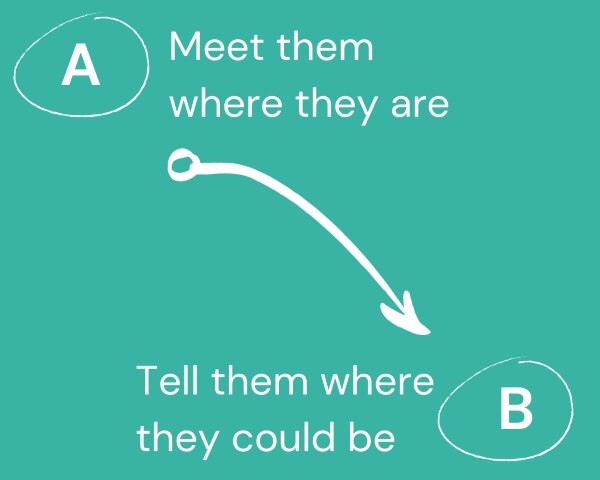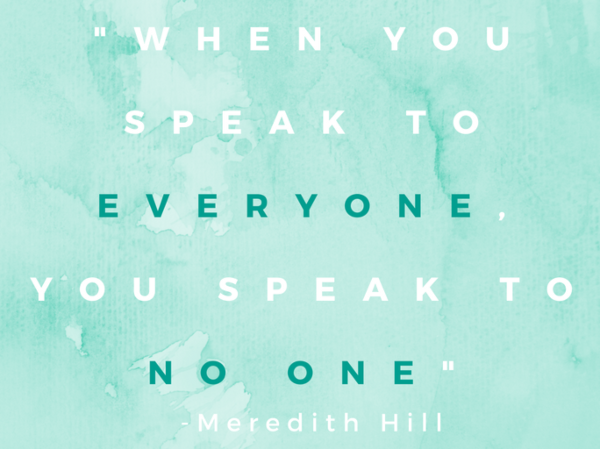Why everyone is not your client in business
When I started my business in 2013, I was convinced that I needed to market to everyone. My thought process was similar to a lot of other entrepreneurs.
“If I get too specific with my messaging then I’m going to alienate people. And if I alienate people, then I’m going to miss someone who could have been a potential client.” And you know what? This thought process makes sense.
But the thing about marketing is you don’t want everyone to resonate with what you’re saying. I’ll repeat that. You don’t want everyone to resonate with you.
Why? Because everyone is not facing the same problem and everyone doesn’t need the same solution. So when your goal is to serve everyone in your business, you’re going to come up short every time. Because there is no way to come up with a product or service that satisfies everyone’s different needs at the same time. You’re just going to find yourself trying to people please everyone, which is going to wear you out and leave you with not a whole lot.
In business, you want to be specific. Because the more specific you are, the more you will attract your ideal clients. The people who want to work with you.
Think about marketing your business in this way:
You are solving a problem for someone with your product or service
Your potential client is stuck in problem-mode and wants to be met there
It’s your job to lead them to your product or service and solve their problem
In order to do this, you need to be super clear on who you’re speaking to and what they’re going through. And you need to be very specific in telling them what you do so they can figure out if that’s what they need and are looking for.
Here’s an example of how to market to a specific audience:
Let’s say that you are a career coach. If someone heard that, they may want you to do several different things for them. Help them to transition out of a job they hate. Help them to get a promotion. Help them to start a business. You name it, people will ask for it. That’s why it’s important that you are specific upfront with what you do for who. And your messaging should reflect that.
If your goal is to help people transition into jobs they love, then you’re working with people who may be at a certain place in their career.
Your messaging should sound like: You’ve worked hard to get to where you are, but you feel like you’ve reached a ceiling. You know what you’re capable of and are ready to find an environment where you can thrive.
If your goal is to help people get a promotion at work, then you’re working with people who want to stay where they are and work their way up.
Your messaging should sound like: Maybe you’re seeing everyone around you get that promotion, or you’re hearing friends talk about the moves they’re making at work, and you’re ready to join the conversation.
If your goal is to help people get out of their current job and start a business, then you’re working with people who are entrepreneurial-minded.
Your messaging should sound like: You’ve never felt like the 9-5 suited you. You know you have a purpose and something to deliver to the world, but you need help knowing the right steps to take to get you there.
Remember this. There are people who want to hear from you. There are people who are facing a problem in their lives and they are looking for a solution.
You may be the person with the exact solution someone needs, but they will never even know you exist if you don’t talk directly to them - if you don’t get specific about what you can help them with.
Don’t do your business a disservice. Know how to say what you do and tell the people who need to hear it, so they can find you and hire you that much faster.
Need some help saying what you do? That’s what this free resource is for.


